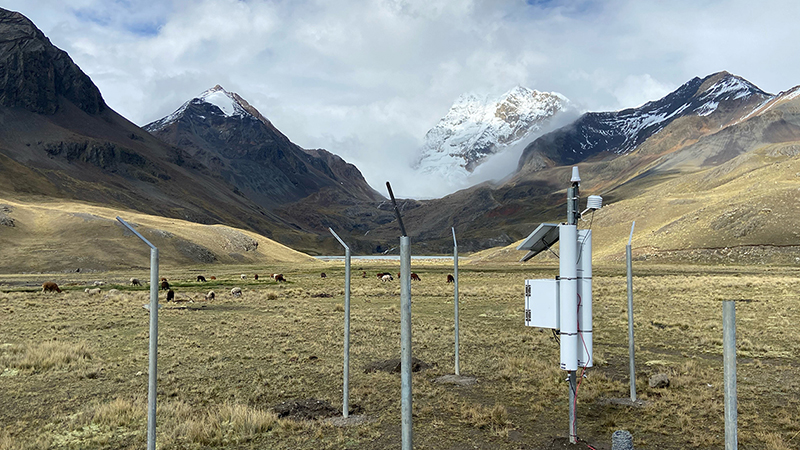
The International Atomic Energy Agency (IAEA), in cooperation with the Food and Agriculture Organization of the United Nations (FAO), delivered equipment to Bolivia to help local scientists study how high-altitude wetlands can buffer water as glaciers disappear. The Cosmic Ray Neutron Sensor (CRNS), which measures area-wide soil moisture, was installed at around 4,500 meters altitude, close to the eternal snow of the 6,088 meters high Huayna Potosi mountain in the Cordillera Real. The device will help scientists, who were trained on its use, to predict the extent and likelihood of droughts, and in turn support decision makers to develop climate-change adaptation strategies for mountain ecosystems.
More details at: https://www.iaea.org/newscenter/news/iaea-supports-study-of-bolivian-wetland-water-reserves-as-glaciers-melt